   
The history of tiki culture dates back to ancient Polynesia. Such carvings were first discovered in Polynesia, and tiki carvings are said to represent a Polynesian God...... Similar to the way the Christian religion sees Adam as the first created human, Maori mythology refers to Tiki as the first man. They’re an integral part of South Pacific mythology, culture and history.
The sheer number of legends surrounding Tiki is quite astounding—possibly because so many island cultures pay tribute to Tiki Gods. The four major Hawaiian Tiki Gods are Ku the God of War, Lono the God of Fertility and Peace, Kane the God of Light and Life, and Kanaloa the God of the Sea. Ancient followers worshiped these Gods through prayer, chanting, surfing, lava sledding and even human sacrifice.
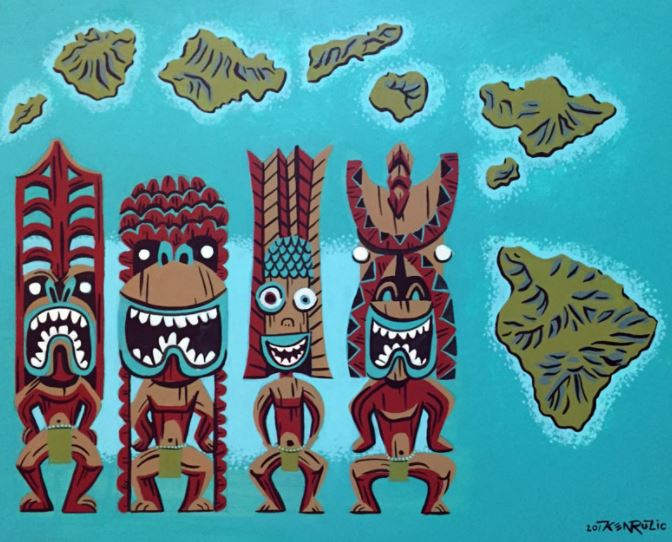
Lono, Ku, Kanaloa, Kane
TIKI CULTURE AND ART
Tiki carving is one of the oldest art forms known to man, and all original Tiki carvings are unique. Each island culture introduced another variation to the carving technique. In most tiki cultures, Tiki statues carved by high-ranking tribesmen were considered sacred and powerful, and these were used in special religious ceremonies. Tiki statues carved by anyone other than a high-ranking tribesman were used simply as decoration. Some island people still believe in the power of the Tiki, just as some statues are created to be used as focus objects for ceremonies—similar to voodoo rituals. Statues carved with threatening expressions are often used to scare away evil spirits, and others with more amicable expressions are created for use in religious ceremonies, healing services, or to bring good luck.

Modern Tiki Culture Society’s fascination with Tiki culture and art spurred him into mass popularity in the 1930s. Carvings and other Polynesian art became some of the main focal points for tropical restaurants and Tiki bars around the world. The first bar and restaurant with focus on Tiki culture was opened in 1934 by Ernest Raymond Beaumont-Gantt. Beaumont-Gantt later changed his name to Donn Beach to match the name of his restaurant, “Don the Beachcomber.” The restaurant featured exotic drinks, flaming torches and Cantonese cuisine.
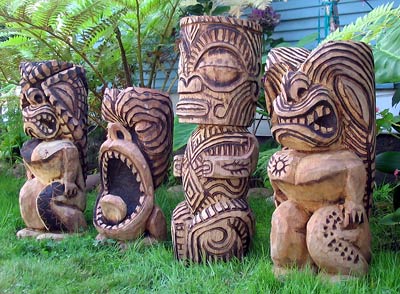
In the early 1940s, when many soldiers were returning home from WWII, the “Trader Vic” chain of restaurants was introduced and quickly grew in popularity. Creator Victor Bergeron also decorated his restaurants in tropical fabrics, rattan furniture and flaming torches. Soldiers returning home from the South Pacific were familiar with the cuisine and decor, and with this familiarity spurring its popularity, the island style quickly found its way through many other establishments and homes in the United States.

The 1970s saw a decline in Tiki bars, as disco became the predominant night club scene. Never fear, the 1980s revived Tiki culture once again! Teenagers became interested in Tiki Gods, and the middle-aged became nostalgic and sentimental over parties their parents had hosted when they were young.
The most modernized Tiki restaurants and bars maintain their tribal roots; they still display their brightly colored fabrics, flaming torches and statues. Some have incorporated lounges, live island bands, even thundershowers and stage shows. Rum-based drinks like the mai tai and Zombie still flow freely and the Tiki Gods maintain their scowling disposition..
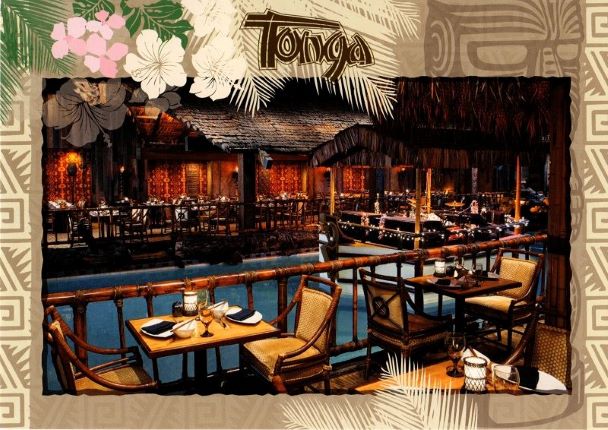
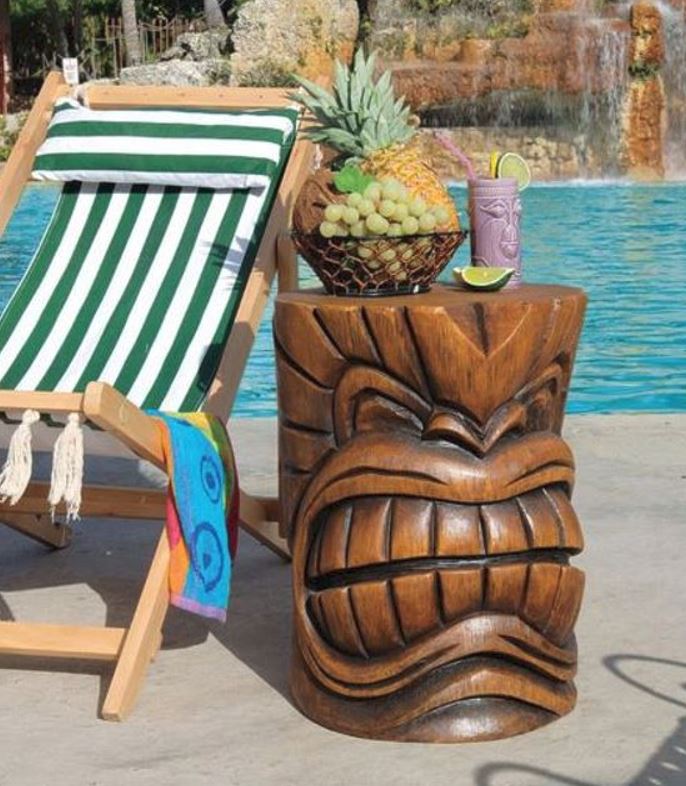 . .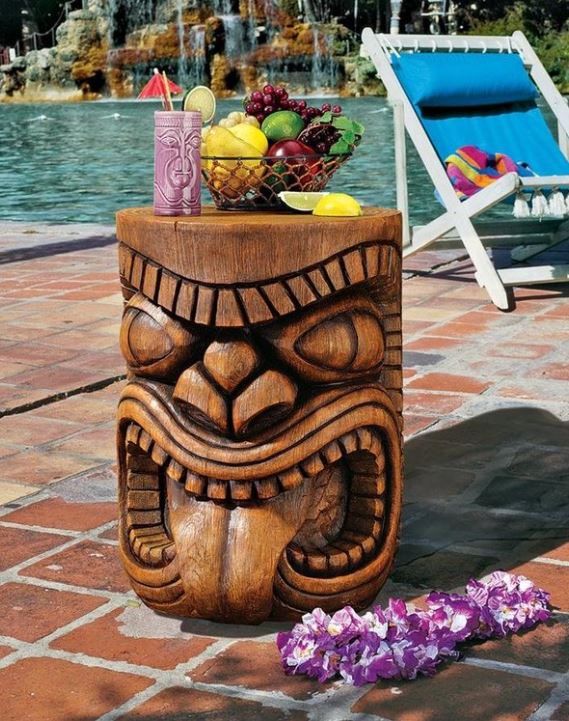
Time flies when you are having Rum!
My home Tiki Bar!

Tiki Bar Drinks
Mai Tai
Zombie
Lava Flow
Maui Brewery - Bikini Blonde Beer
  
He'd been drinking in a bar downtown, when he thought he heard a choir of angels
singing in the Tiki Lounge. And that's when he got religion. - Elton John
  
|